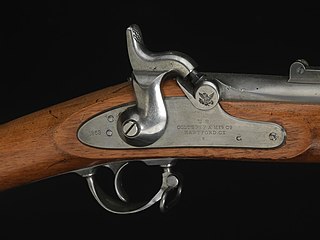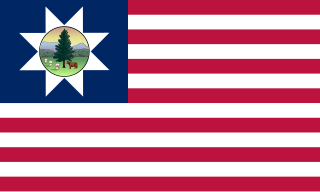Service
1861
The regiment was organized in New York City and was mustered in for a two-year enlistment on April 23, 1861. It was nicknamed "The Steuben Rangers". Early in its training, it was so poorly equipped that a civilian who visited the troops wrote a letter to the editor of The New York Times (published May 16, 1861) complaining that tailors within the regiment had to resew the uniforms and put buttons on them, and that some of the soldiers were wearing "flip-flaps". The letter-writer was impressed (spelling and punctuation as in the original):
I have seen no troops before, and I have seen none since, in which there was the same indescribable aspect of discipline. The men were not in uniform, but very poorly dressed, — in many cases with flip-flap shoes. The business-like air with which they marched rapidly through the deep mud of the Third-avenue was the more remarkable.
With "one or two exceptions" almost every officer then in the regiment had experience in European armies, and six out of eight of the soldiers had seen service, often in battle. "The only arms they have as yet are a few old muskets bought by the officers themselves."
The regiment, commanded by Colonel John E. Bendix, was accepted by the State, April 26, 1861; organized at New York city, and there mustered in, the service of the United States for two years, on April 23, 1861. Company I was recruited at Brooklyn, the others in New York City.
1862
It left New York for Fortress Monroe on May 24, and was quartered at Newport News. It took part in the engagement at Big Bethel and returned to camp at Newport News until in March, 1862, when it was assigned to the 1st Brigade, 1st Division, Army of Virginia. It then served in the 1st Brigade, 1st Division, II Corps, Army of the Potomac, from May 1862, with which it served through the campaign on the Peninsula,taking part in the Seven Days battles with heavy loss. At Antietam it lost 15 killed and 49 wounded, but its heaviest loss was at Fredericksburg, when 243 members were killed or wounded out of a total of 488 engaged.
1863
On April 25, 1863, the original two years' members were mustered out at New York City and the three years men were transferred to the 52nd New York Infantry Regiment but not absorbed by them until after the battle of Gettysburg in July, 1863. The 7th was active in the Chancellorsville campaign and at Gettysburg, after which the remnant of the 52nd and the 7th was consolidated with the 7th New York Veteran Infantry. On July 22, 1864, the few remaining men were then transferred to the 7th New York Veteran Volunteers.
Commanded by Colonel George W. Von Schack at the completion of its service, the regiment was honorably discharged and mustered out, May 8, 1863, at New York City.
On May 6, 1863, Colonel Von Schack received authority to reorganize, for a period of three years, the 7th New York, then about to be mustered out by reason of the expiration of its term of service.
To effect the reorganization the following were appointed by the Governor, May 6, 1863, but not commissioned:
- George W. Von Schack - Colonel
- Frederick A. H. Gaebel - Lieutenant Colonel
- Charles Brestel - Major
- Peter Hesse - Adjutant
- F. C. G. Moyne - Quartermaster
- Charles Gray - Surgeon
These appointments became void on the discontinuance of the reorganization on October 14, 1863, when the men enlisted were transferred to the 178th New York Infantry.
1864
In spring, 1864, Col. George W. Von Schack, under his former authority, again commenced the formation of a regiment, under the above title, and the organization took place at Hart's island. New York harbor. The companies were mustered in the United States service for three years; A, B, C, D and E March 29, May 1, June 4, July 15, and August 9, 1864, respectively; for one, two and three years. Company F, September 1, 1864; for one and three years, Company G, September 17, 1864; and for one year. Companies H, I and K, October 13, 22, and 31, 1864, respectively.
The three years' men of the original 7th Regiment, serving with the 52nd Infantry, were assigned to Companies A, B, C and D of this regiment, July 22, 1864. The companies were recruited principally:
- A and C at Brooklyn and New York city
- B at Brooklyn, New York city and Albany
- D, E, F, G, H, I, and K in New York city, Brooklyn, Jamaica, Tarrytown, Albany, Poughkeepsie, Goshen, Schenectady, Kingston and Troy.
The regiment left the State in detachments, the first, Company A, in April, 1864; the companies, as they arrived, were attached to the 52nd and served as part of this regiment until July 22, 1864, when it appears on the records as a distinct organization.
The regiment joined the Army of the Potomac and participated in the Overland campaign and the Siege of Petersburg.
1865
The regiment served in the Siege of Petersburg and Appomattox campaign in the Consolidated Brigade, 1st Division, II Corps, Army of the Potomac. The men returned to New York and were honorably discharged and mustered out, under the command of Colonel Von Schack, August 4, 1865, at Hart's sland, New York harbor.
During its second incarnation, it lost by death, killed in action, 2 officers, 29 enlisted men; of wounds received in action, 1 officer, 18 enlisted men; of disease and other causes, 53 enlisted men; total, 3 officers, 100 enlisted men; aggregate, 103; of whom 9 died in the hands of the enemy.













